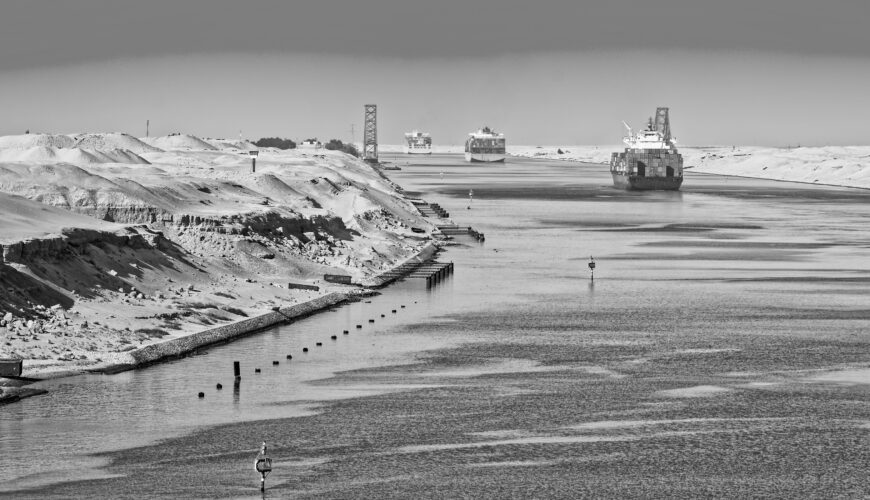Ships are avoiding the Suez Canal and causing major supply chain delays. While the issue began in late 2023, the new year is already feeling the impact of the first significant obstacles to smooth supply chain management. The continued Houthi attacks in the Red Sea are making the prospect of passing through the Suez Canal difficult. The United States has teamed up with a few other nations to stop the attacks hopefully, but uncertainty remains. In the face of supply chain disruptions, companies that depend on the Suez Canal for cargo shipments must now figure out reliable contingency plans.
Most of this responsibility lies with the ocean carriers that move their ships through the Suez Canal. In December, dozens chose to reroute through the Cape of Good Hope in South Africa. This, of course, brings with it new challenges. One is the slower transit times to take this longer route. On a typical shipment originating from Asia and headed to the East Coast United States, supply chain managers should build in an extra five days in transit in a best-case scenario. The movement would likely involve a multi-modal approach and a switch to a West Coast port. From there, companies could use trucks and rail to minimize costs and travel long distances nationwide.
Speaking of costs, skipping the Suez Canal and opting for the Cape of Good Hope adds in a significant increase for fuel, in the high six- to seven-figure range. Multiply this by the number of ships and weeks to months of diversion, and bottom lines will suffer. Spot rates will also increase, and they already have reports for Asia to U.S. routes. However, if there’s a silver lining, there is more capacity on ocean carriers today than there was in 2021, during the unexpected Suez Canal blockage. Another wild card in the cost implications is insurance premiums, which may go up in some instances.
When it comes to which segments of the supply chain might be most affected, virtually none will come away entirely unscathed. Some 30 percent of global container traffic passes through the canal regularly, and the Asia to Europe trade lane will be hit the hardest. The automotive and technology industries rely heavily on passage through the Suez Canal, as do big-box retailers. Companies that carry apparel, toys, and electronics that usually move from Asia to the East Coast will likely feel the impact. Regarding goods originating from the East Coast, companies that ship grains and liquified gases may experience the most disruptions. Air transit—for those products that can travel that way—is a safer bet for the time being.
Finally, the disruptions don’t end at the Suez Canal. The Panama Canal continues to suffer from drought, which has resulted in slowdowns as fewer ships can make the daily passage. Heading into February, this delay is expected to grow even longer as canal authorities further reduce the number of slots available for passage.
The new year is off to a disruptive start, but hopefully, pandemic-era lessons will help most companies effectively weather the storm.


